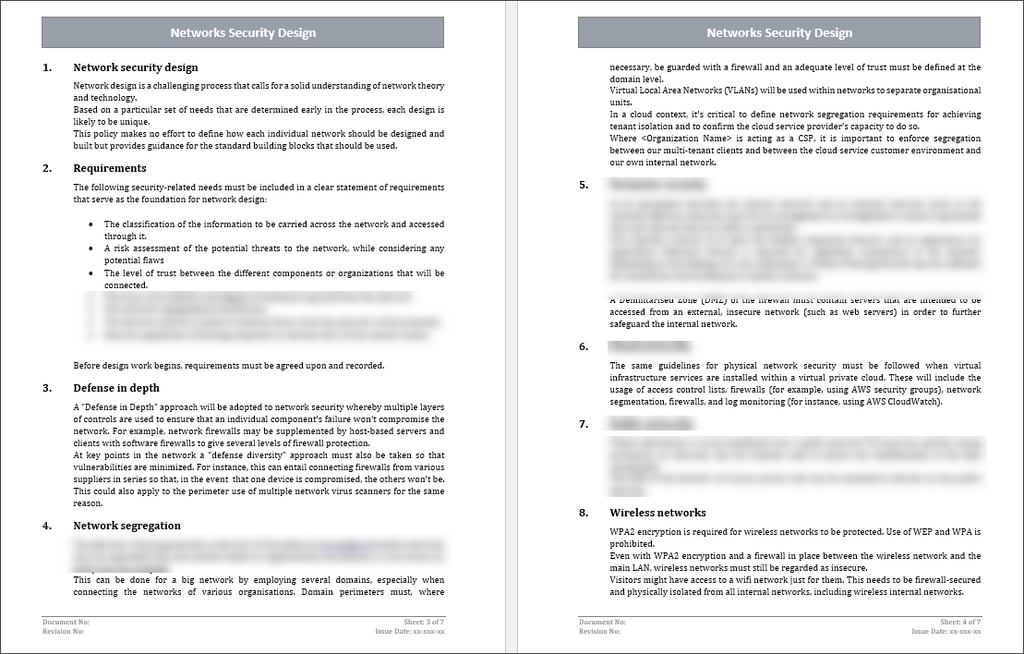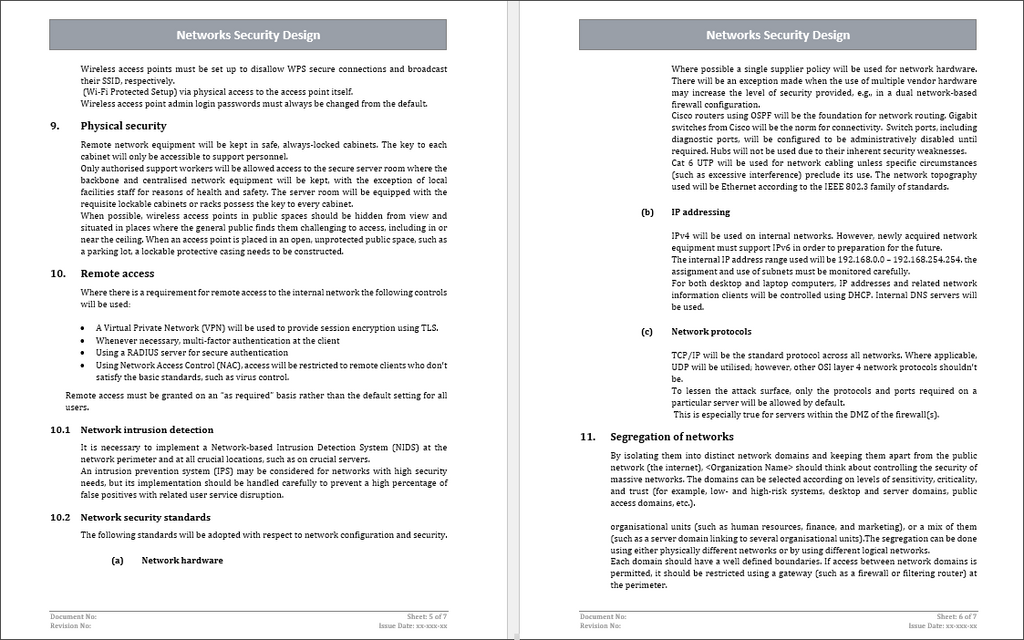
Network security is a critical aspect of an organization's overall information security management system (ISMS). It plays a fundamental role in safeguarding the confidentiality, integrity, and availability of sensitive data and ensuring the smooth and secure flow of information within and outside the organization. To address the complexities and challenges of network security effectively, many organizations adopt the guidelines and best practices outlined in the ISO 27001 standard.

ISO 27001 is an internationally recognized framework for establishing, implementing, maintaining, and continually improving an ISMS. It provides a systematic approach to managing information security risks and aligning security practices with business objectives. Within the scope of ISO 27001, network security design is pivotal in protecting an organization's digital assets, preventing unauthorized access, and defending against cyber threats.
Monitoring and updating network security measures is a critical aspect of ISO 27001's information security management framework. Networks are the lifeline of modern organizations, and ensuring their security is vital for safeguarding sensitive information, maintaining business operations, and preventing security breaches. Here's how to effectively monitor and update network security measures within the context of ISO 27001:
1. Continuous Network Monitoring:
Implement network monitoring tools that provide real-time visibility into network traffic, devices, and activities.
Monitor network logs, traffic patterns, and user behavior to detect anomalies, unauthorized access, and potential security breaches.
2. Intrusion Detection and Prevention Systems (IDS/IPS):
Deploy IDS/IPS solutions to identify and block suspicious activities, such as unauthorized access attempts or malicious traffic.
Regularly update and fine-tune these systems to adapt to new threats and vulnerabilities.
3. Vulnerability Management:
Regularly scan the network for vulnerabilities using automated tools.
Prioritize vulnerabilities based on severity and impact, and promptly apply patches or mitigation measures.
4. Firewall and Access Control Management:
Review and update firewall rules and access control lists (ACLs) to ensure that only necessary and authorized network traffic is allowed.
Regularly assess and adjust rules to accommodate changes in business needs while maintaining security.
5. Security Information and Event Management (SIEM):
Implement a SIEM system to aggregate and analyze security-related data from various sources, enabling timely detection and response to security incidents.
Review SIEM alerts and reports to identify trends and potential security threats.
6. Network Configuration Management:
Maintain an up-to-date inventory of network devices, configurations, and connections.
Document and manage changes to network configurations to prevent misconfigurations that could lead to security vulnerabilities.
7. Regular Security Audits:
Conduct network security audits to assess the effectiveness of implemented security measures.
Evaluate network architecture, controls, and policies against industry best practices and ISO 27001 requirements.
8. Incident Response Planning:
Develop and maintain an incident response plan that outlines steps to take in the event of a security breach or network incident.
Regularly test and update the plan to ensure its effectiveness and relevance.
9. User Awareness and Training:
Provide regular security awareness training to employees to educate them about network security best practices, social engineering threats, and safe online behavior.
10. Regulatory Compliance:
- Ensure that network security measures are aligned with any relevant legal and regulatory requirements that apply to your industry or jurisdiction.
11. Regular Review and Improvement:
Continuously review network security measures to identify areas for improvement based on changing technology, emerging threats, and lessons learned from security incidents.
By maintaining a proactive approach to monitoring and updating network security measures, organizations can effectively mitigate risks, detect security breaches early, and maintain the confidentiality, integrity, and availability of their information assets. This approach aligns with the principles of ISO 27001 and helps organizations adapt to the evolving threat landscape.
The importance of network security design in ISO 27001 cannot be overstated. Network security is a fundamental aspect of an organization's information security management system (ISMS) and serves as a critical line of defense against cyber threats and unauthorized access. Here are some key reasons why network security design is crucial in the context of ISO 27001:


The network security design is a critical aspect of ISO 27001's approach to information security. By implementing robust network security measures, organizations can protect their data, manage risks effectively, meet regulatory requirements, and build trust with stakeholders. Embracing network security best practices within the framework of ISO 27001 ensures that an organization's information assets are well-defended in today's increasingly interconnected and cyber-threatened landscape.
Identifying vulnerabilities and threat vectors is a crucial step in the ISO 27001 Information Security Management System (ISMS) implementation. It involves systematically assessing potential weaknesses in an organization's information security landscape and identifying the various ways in which threats could exploit these vulnerabilities. Here's how to approach this process within the framework of ISO 27001:
In conclusion, monitoring and updating network security measures are crucial in the ISO 27001 Information Security Management System (ISMS) framework. By continuously monitoring the effectiveness of network security controls and promptly responding to security incidents, organizations can enhance their information security posture and protect sensitive data from evolving cyber threats.
ISO 27001 emphasizes the importance of maintaining a robust and resilient network security infrastructure through regular security assessments, vulnerability scans, and penetration tests. These activities help identify vulnerabilities and weaknesses in the network, allowing organizations to take proactive measures to address potential threats.